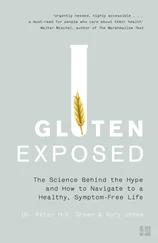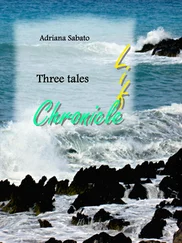Writing in the wake of 9/11 on the need to decouple prediction from value judgments in the intelligence sphere, psychologists Philip Tetlock and Barbara Mellers write, “The closer scientists come to applying their favorite abstractions to real-world problems, the harder it becomes to keep track of the inevitably numerous […] variables and to resist premature closure on desired conclusions.” [14] Tetlock and Mellers 2011:552.
In juxtaposing vulnerable lives against “favorite abstractions,” this book shows how technopolitical responses themselves aggravated the problems they tried to resolve, and even led to new ones. It tracks premature closure from the standpoint of the inevitably numerous variables and behaviors that were generated by official responses themselves. Understanding these interlinked processes anthropologically is crucial if we are to make sense of the governance of nuclear disasters and their long-term human implications, particularly as they might be unfolding in Japan in the wake of the Fukushima Daiichi plant disaster.
Working against premature closure, many scientists have called for further research into Chernobyl’s health effects. The disaster should have become the touchstone for the human epidemiology of high-dose and chronic low-dose exposures in the context of nuclear accidents. This definitive “laboratory” of human radiation exposure should have yielded medical information at various doses and over various timescales, a better understanding of the uncertainties of available knowledge, and a serviceable way of thinking about and predicting the health consequences of accidental nuclear exposures. According to a UN report published at a time when there was still hope for further study, “If active steps are not taken to resolve the human problems relating to the accident… the fate of the communities blighted by Chernobyl will continue to haunt discussions on energy generation for decades to come. In the context of global warming, governments around the world and the international energy industry share an interest in resolving these problems and promoting a debate on the future of nuclear power based not on emotion but on arguments and facts.” [15] Human Consequences 2002:2.
Let us return to the teeth. After all, they belonged to soldiers, firemen, and other workers who went, voluntarily or involuntarily, to the disaster site to physically remove radiation. These people were sent in because Chernobyl exceeded the logistical competence of states and remediation plans. And, depending on where they stood in the pecking order of Soviet and post-Soviet privilege, some were paid (elite firefighters, Interior Ministry workers, and coal miners); some volunteered; and some were enlisted or shanghaied, because of the great number of people needed to carry out the mission of stabilization and cleanup. In theory, nuclear and military leaders were to closely monitor recruits’ exposure to radiation, and to remove them from the site to control dose exposure. In practice, commanders often deemed it more expedient to overexpose those already in the Zone than to call in more workers, and largely ignored monitoring. Experts gathered by the IAEA in the raft of international “consensus”-building conferences that quickly followed Chernobyl never, in their assessments, acknowledged these stories of unjustified overexposures. They defined—and announced year after year on the disaster’s anniversary—the news of Chernobyl’s limited and controlled aftermath. The teeth are the only hard evidence of substantial involuntary and uncontrolled labor processes.
In the end, we have two stories—two competing and incommensurable stories—of Chernobyl. One maintains that “nothing happened here. Nothing happened here… and nothing is going to happen here,” to quote a key medical response leader. Life Exposed holds that something did happen here, inside the choreography of Chernobyl containment, and that the larger human dimension of what happened is of paramount significance and should remain firmly fixed at the center of scientific inquiry.
Regrettably, over twenty-five years after the disaster, large-scale epidemiologic follow-up of workers and evacuees has barely occurred. Researchers need to systematically link together individuals’ reconstructed histories of exposure and their clinical profiles in order to craft an internationally recognized body of information about Chernobyl’s consequences. But funding and research networks are coming apart. The official accountants of Chernobyl’s toll remain stuck in the “verifiable” facts of the immediate short-term period and reject data on long-term sequelae of high-dose and lower-dose exposures. Independent scientists with significant bodies of research from Ukraine, Belarus, Russia, Spain, France, the United Kingdom, the United States, Finland, and Japan have noted endocrinological, musculoskeletal, respiratory, and circulatory problems and a rise in malignant tumors, especially of the breast and prostate. Many of these scientists recently came together to design what promised to be a pivotal study of “the lifetime health of more than half a million ‘liquidators’ sent in to clean up the area around Chernobyl, as well as of the general population of the region who were children at the time of the accident.” This crucial, last-ditch effort to study these populations would have covered “more than ten times as many people as the lifetime cohort study set up in Japan after the Hiroshima and Nagasaki atomic bombs, which remains the gold standard for studies on the impact of radiation on a population.” [16] For a description of this key lifetime cohort study, see ARCH n.d.
Funding for this lifetime cohort study was declined because “uncertainties over the doses received by the exposed Chernobyl population potentially weaken the value of such studies.” [17] Butler 2011.
The European Commission rejected a large-scale life-study approach in favor of a more mechanistic one, said to “deepen understanding of the interaction of radiation with tissue.” Studying the mechanisms of radiation damage in controlled settings is simply easier than “the messier epidemiological work that is needed to gather data and to get a picture of any health effects in the aftermath of a real-life nuclear accident.” [18] Butler 2011. As of this writing, the European Commission may be reconsidering its decision, given the need for such a study; a life span study might be funded on a tripartite basis, that is, the United States, Japan and Europe.
This readiness to discount the raw data of real lives in favor of abstractions, this pattern of systematic inattention to “how they survived,” was established very early on in the science of Chernobyl (see chapter 2). Today, the missing human lifetime studies and studies of multigenerational exposures from Chernobyl make projections of risk over time uncertain at best.
To date, a decidedly nonpeopled approach has taken hold of the Chernobyl science establishment. It has left those who survived in a medical and scientific void, in which a lack of knowledge puts them at risk of miscategorization. Others have died anonymous and unstudied deaths. The science of human radiogenic complexity post-Chernobyl has been reduced to yes-or-no answers to leading questions that are perhaps not the most compelling ones. For example, the 2005 press release “Chernobyl: The True Scale of the Accident Based on a UN Report” provides the following sorts of questions and answers: How much radiation were people exposed to as a result of the accident? Not enough to cause problems. How many people died and how many more are likely to die in the future? About 50, 4,000 max. Have there been or will there be any inherited or reproductive effects? No. Did the trauma of rapid relocation cause persistent psychological or mental health problems? Yes. What has been the impact on individuals? Largely none, except for mental stress. Crude affirmative messages like these appear mysteriously, as if from a Magic 8-Ball. Shake the ball once: “It is certain.” Shake it again: “It is decidedly so.”
Читать дальше












